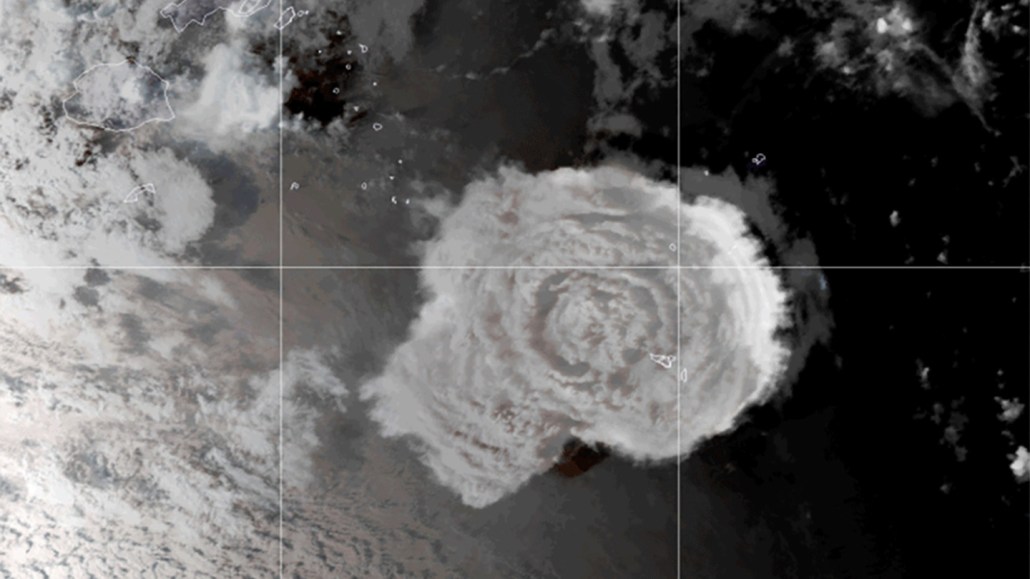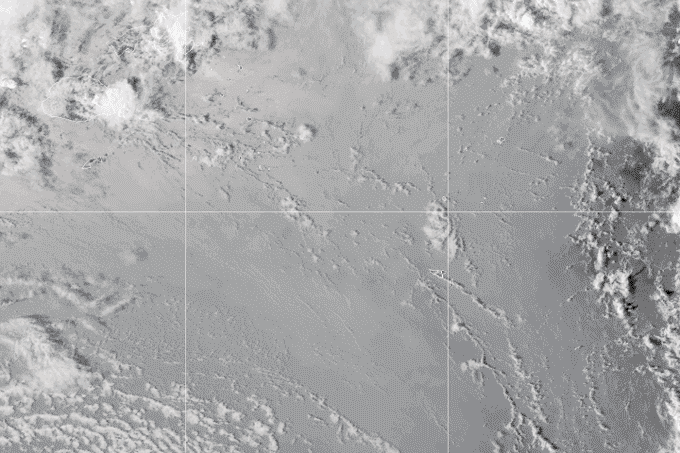One 2022 tsunami may have been as tall as the Statue of Liberty
The volcano that caused it also created a pressure wave and a new set of damaging tsunamis

The underwater eruption of the Hunga Tonga-Hunga Ha’apai volcano on January 15, 2022, generated massive tsunamis. Those waves may have started out as a mound of water 90 meters (295 feet) tall.
NASA Earth Observatory
Share this:
- Share via email (Opens in new window) Email
- Click to share on Facebook (Opens in new window) Facebook
- Click to share on X (Opens in new window) X
- Click to share on Pinterest (Opens in new window) Pinterest
- Click to share on Reddit (Opens in new window) Reddit
- Share to Google Classroom (Opens in new window) Google Classroom
- Click to print (Opens in new window) Print
By Sid Perkins
In January, an underwater volcano in the South Pacific underwent an epic eruption. The event packed as much power as a nuclear bomb. It also generated tsunamis around the world. Now it seems that some of those waves may have started out as a single mound of water about as high as the Statue of Liberty!
That’s not all. New research also shows the eruption triggered a huge shock wave in the atmosphere. That pulse spawned a second set of especially fast-moving tsunamis. Such a rare phenomenon can mess with early warnings of destructive waves.
Researchers shared these findings in the October 1 issue of Ocean Engineering.
The volcano behind this drama is named Hunga Tonga–Hunga Ha’apai. It lurks under the ocean in the island nation of Tonga. Its eruption in January launched a large volume of water upward, says Mohammad Heidarzadeh. He’s a civil engineer at the University of Bath in England. The water in that mound later “ran downhill” to generate one set of tsunamis.
Heidarzadeh and his colleagues wanted to know just how big that mound of water had been. So his team looked at data from instruments within about 1,500 kilometers (930 miles) of the eruption. Many of the devices were in or near New Zealand. Some had been placed deep in the ocean. Others sat on coastlines. The instruments recorded when tsunami waves hit different places. They also showed how big the waves were at each site.

The team used a computer model to compare those data to simulations of the waves an initial mound of water should create. They considered nine simulations. In all, the mound of water was generally shaped like the bump of a baseball pitcher’s mound. But each one had a different height and width.
The simulation that best fit real-world data was a mound of water a whopping 90 meters (295 feet) tall and 12 kilometers (7.5 miles) wide. It would have contained about 6.6 cubic kilometers (1.6 cubic miles) of water. That’s almost 1,900 times the volume of Louisiana’s Superdome stadium.
No question, Heidarzadeh says: “This was a really large tsunami.”
Superfast surprise tsunamis
Another strange aspect of the Tongan eruption was the second set of tsunamis it triggered. They were caused by a large volume of cold seawater rushing into the hot chamber of magma beneath the erupting volcano.
The seawater quickly vaporized. This created an explosion of steam. That blast triggered a shock wave in the atmosphere. This pressure wave raced across the ocean’s surface at more than 300 meters per second (670 miles per hour), pushing water ahead of it. The result: more tsunamis.
These tsunamis moved much faster than the ones caused by the collapsing 90-meter tower of water. Along many coastlines, pressure wave–generated tsunamis arrived hours before those other waves. But they were just as big. (Some of the coasts hit by these were as far off as the Indian Ocean and Mediterranean Sea.)
Those fast-moving tsunamis from the shock wave came as a surprise. Only one other volcanic eruption is known to have spurred tsunamis this way. It was the infamous 1883 blast in Indonesia by Krakatoa.
Tsunami-warning systems could be improved to account for such superfast waves. One option is to install instruments that measure atmospheric pressure using the deep-sea equipment already in place to detect tsunamis, says Hermann Fritz. He’s a tsunami scientist at Georgia Tech in Atlanta who did not take part in the new study. Such a setup, he says, would help scientists tell if a passing tsunami is being driven by a pressure pulse. If so, that could provide a clue to how fast the tsunami wave is traveling.







